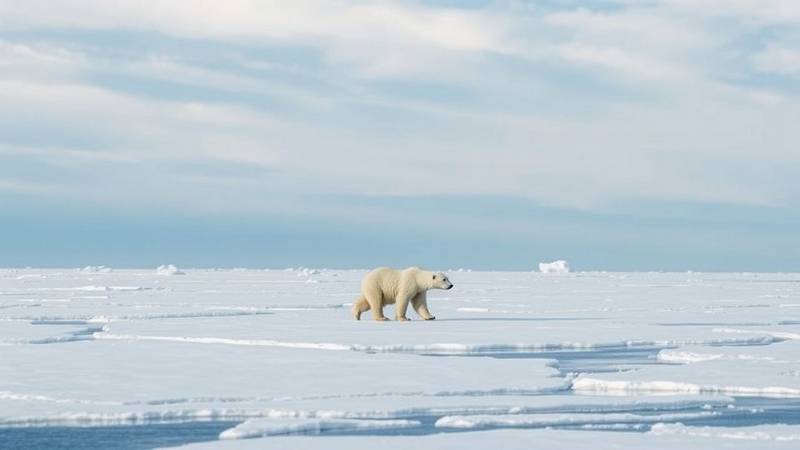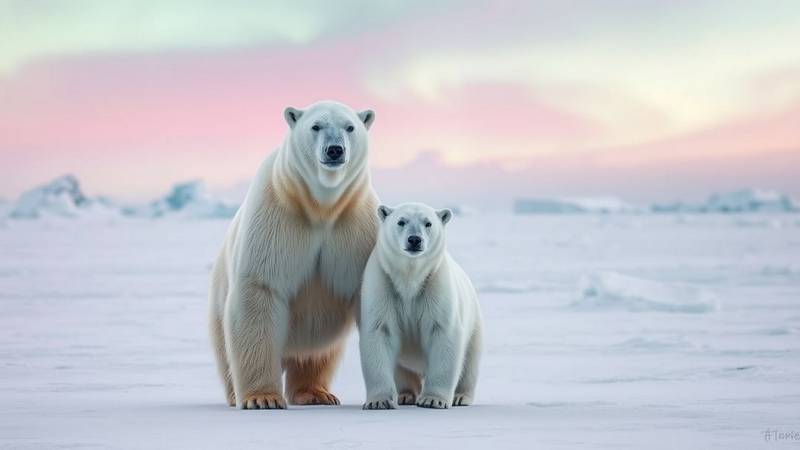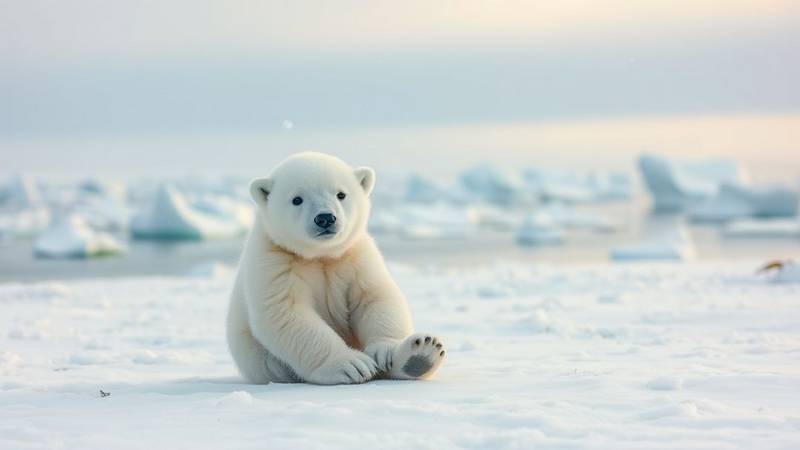Polar Bear Weight: Meet These Amazing Arctic Giants
The polar bear (Ursus maritimus) is our planet's largest land carnivore, and their weight isn't just impressive—it's essential for survival in the brutal Arctic wilderness. That massive build you see? It's mostly a thick layer of fat that works like nature's own winter coat, keeping them warm in bone-chilling temperatures and giving them energy reserves when seals (their favorite meal) are hard to find. A polar bear's weight can swing dramatically depending on how old they are, whether they're male or female, what season it is, and how well they've been eating.

When we look at polar bear weight, we're getting a window into their world—how healthy they are, whether they can successfully raise cubs, and what's happening to their rapidly changing Arctic home as our climate shifts.
Adult Polar Bear Weights: Males vs. Females
Polar bears exhibit significant sexual dimorphism, meaning males are considerably larger and heavier than females. This difference is most pronounced in adult bears.
Male Polar Bear Weight
Adult male polar bears typically weigh between 350 to over 700 kilograms (770 to 1,540 pounds). The largest individuals, often found in regions with abundant prey, can exceed 800 kg (1,760 lbs). Their peak weight is usually attained in late spring or early summer after a successful seal hunting season on the sea ice.
Female Polar Bear Weight
Adult females are generally about half the size of males, weighing between 150 to 350 kilograms (330 to 770 pounds). However, a pregnant female can gain an additional 200 kg (440 lbs) or more before entering her maternity den, as these fat reserves are crucial for her survival and for nursing her cubs during the denning period.

Avg. Male Weight
(770-1540 lbs)
Avg. Female Weight
(330-770 lbs)
Pregnant Female Gain
(Up to +440 lbs)
Largest Recorded
(~2200 lbs - exceptional male)
From Tiny Cub to Mighty Juvenile: Weight Progression
Polar bear cubs are born remarkably small relative to their mothers, typically weighing only around 0.5 to 0.7 kilograms (1.1 to 1.5 pounds). They are blind, nearly hairless, and completely dependent.

Thanks to their mother's extremely rich milk, which can be over 30% fat, cubs grow rapidly. By the time they leave the maternity den at three to four months of age, they usually weigh around 10 to 15 kilograms (22 to 33 pounds). They continue to nurse for about two to two-and-a-half years, during which their weight increases substantially as they also learn to hunt and consume seals.
Rapid Growth Fueled by Fat
The high-fat content of polar bear milk is essential for the cubs' rapid weight gain and development of their own insulating blubber layer, crucial for surviving the Arctic cold once they leave the den.
What Affects a Polar Bear's Weight?
Several interconnected factors influence a polar bear's weight throughout its life:
- Seasonality and Diet: Polar bears gain the most weight in spring and early summer when ringed and bearded seal pups are abundant. They may lose significant weight during the late summer and autumn when sea ice retreats, making hunting difficult.
- Age: Bears reach their peak physical condition and weight in their prime adult years. Very young or very old bears may be lighter.
- Sex: As discussed, males are significantly heavier than females.
- Reproductive Status (Females): Pregnant females actively increase their weight. Lactating females may lose condition while nursing cubs if hunting is poor.
- Geographic Location & Prey Availability: Bears in areas with more productive marine environments and stable sea ice tend to be heavier.
- Individual Hunting Success: Skill and luck in hunting directly impact food intake and thus weight.
- Health: Illness or injury can lead to weight loss.
The Critical Role of Weight in Survival and Conservation
A healthy body weight is paramount for a polar bear's survival. Sufficient fat reserves are essential for:
- Insulation: Protecting against extreme cold.
- Energy Storage: Surviving periods of food scarcity, especially during the summer ice melt or for females during denning.
- Reproduction: Females need adequate body fat to successfully carry cubs to term and produce enough milk. Heavier males may also have better mating success.
Climate change poses a severe threat to polar bears' ability to maintain a healthy weight. The shrinking extent and duration of Arctic sea ice directly reduces their access to seals, their primary food source. This leads to:
- Reduced hunting opportunities and lower overall body condition.
- Lower cub survival rates as mothers struggle to provide.
- Increased instances of bears searching for alternative food sources near human settlements.
A Precarious Balance: Weight and a Changing Arctic
The conservation of polar bears is intrinsically linked to protecting their sea ice habitat. Ensuring they can achieve and maintain adequate body weight is crucial for their future. A decline in average polar bear weight in a population is a strong indicator of environmental stress and declining ecosystem health.
